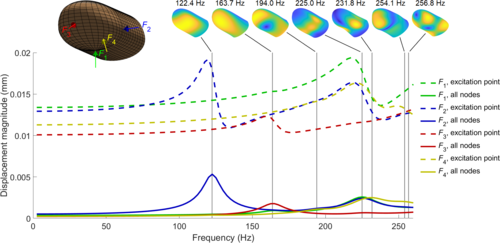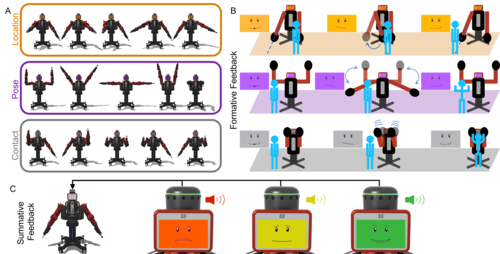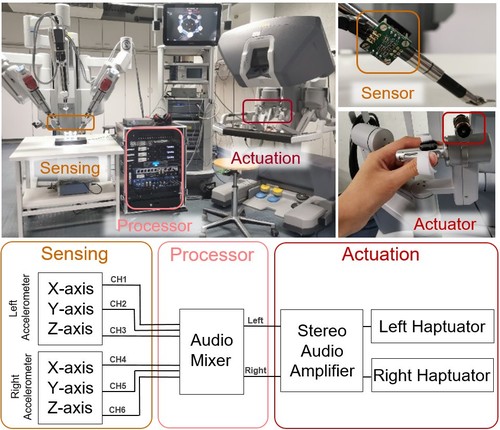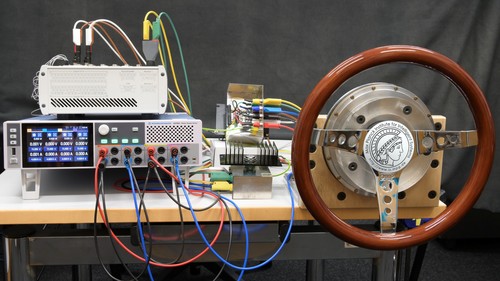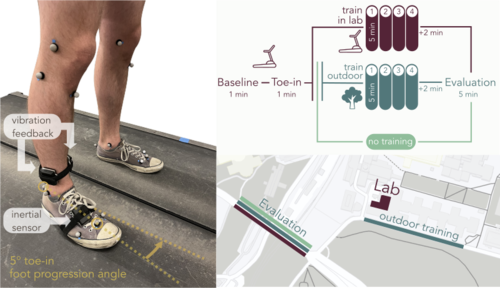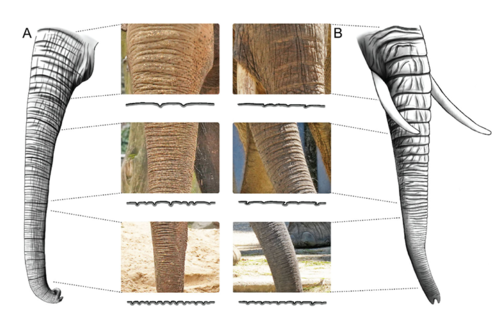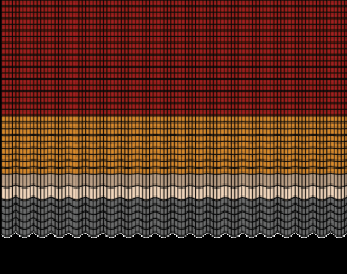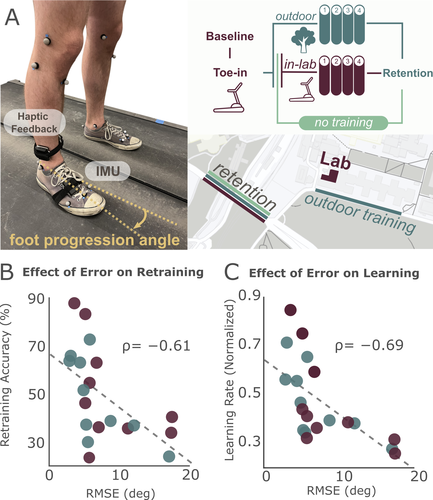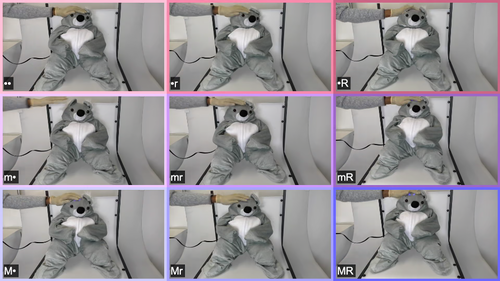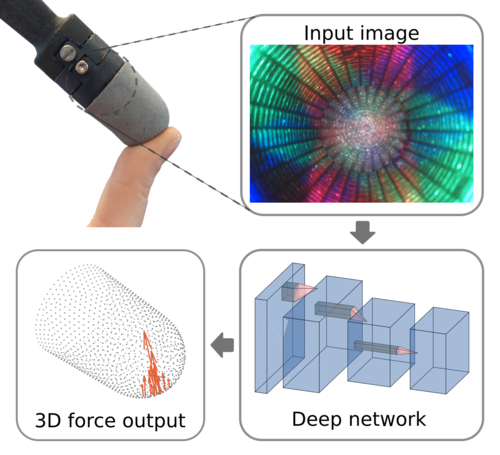2024
Mohan, M., Kuchenbecker, K. J.
Demonstration: OCRA - A Kinematic Retargeting Algorithm for Expressive Whole-Arm Teleoperation
Hands-on demonstration presented at the Conference on Robot Learning (CoRL), Munich, Germany, November 2024 (misc) Accepted
Andrussow, I., Sun, H., Martius, G., Kuchenbecker, K. J.
Demonstration: Minsight - A Soft Vision-Based Tactile Sensor for Robotic Fingertips
Hands-on demonstration presented at the Conference on Robot Learning (CoRL), Munich, Germany, November 2024 (misc) Accepted
Bartels, J. U., Sanchez-Tamayo, N., Sedlmair, M., Kuchenbecker, K. J.
Active Haptic Feedback for a Virtual Wrist-Anchored User Interface
Hands-on demonstration presented at the ACM Symposium on User Interface Software and Technology (UIST), Pittsburgh, USA, October 2024 (misc) Accepted
Cao, C. G. L., Javot, B., Bhattarai, S., Bierig, K., Oreshnikov, I., Volchkov, V. V.
Fiber-Optic Shape Sensing Using Neural Networks Operating on Multispecklegrams
IEEE Sensors Journal, 24(17):27532-27540, September 2024 (article)
Sanchez-Tamayo, N., Yoder, Z., Rothemund, P., Ballardini, G., Keplinger, C., Kuchenbecker, K. J.
Cutaneous Electrohydraulic (CUTE) Wearable Devices for Pleasant Broad-Bandwidth Haptic Cues
Advanced Science, (2402461):1-14, September 2024 (article)
Tashiro, N., Faulkner, R., Melnyk, S., Rodriguez, T. R., Javot, B., Tahouni, Y., Cheng, T., Wood, D., Menges, A., Kuchenbecker, K. J.
Building Instructions You Can Feel: Edge-Changing Haptic Devices for Digitally Guided Construction
ACM Transactions on Computer-Human Interaction, September 2024 (article) Accepted
Rokhmanova, N., Martus, J., Faulkner, R., Fiene, J., Kuchenbecker, K. J.
Modeling Shank Tissue Properties and Quantifying Body Composition with a Wearable Actuator-Accelerometer Set
Extended abstract (1 page) presented at the American Society of Biomechanics Annual Meeting (ASB), Madison, USA, August 2024 (misc)
Sharon, Y., Nevo, T., Naftalovich, D., Bahar, L., Refaely, Y., Nisky, I.
Augmenting Robot-Assisted Pattern Cutting With Periodic Perturbations – Can We Make Dry Lab Training More Realistic?
IEEE Transactions on Biomedical Engineering, August 2024 (article)
Schulz, A., Serhat, G., Kuchenbecker, K. J.
Adapting a High-Fidelity Simulation of Human Skin for Comparative Touch Sensing
Extended abstract (1 page) presented at the American Society of Biomechanics Annual Meeting (ASB), Madison, USA, August 2024 (misc)
Gong, Y.
Engineering and Evaluating Naturalistic Vibrotactile Feedback for Telerobotic Assembly
University of Stuttgart, Stuttgart, Germany, August 2024, Faculty of Design, Production Engineering and Automotive Engineering (phdthesis)
Khojasteh, B., Solowjow, F., Trimpe, S., Kuchenbecker, K. J.
Multimodal Multi-User Surface Recognition with the Kernel Two-Sample Test
IEEE Transactions on Automation Science and Engineering, 21(3):4432-4447, July 2024 (article)
L’Orsa, R., Bisht, A., Yu, L., Murari, K., Westwick, D. T., Sutherland, G. R., Kuchenbecker, K. J.
Reflectance Outperforms Force and Position in Model-Free Needle Puncture Detection
In Proceedings of the Annual International Conference of the IEEE Engineering in Medicine and Biology Society (EMBC), Orlando, USA, July 2024 (inproceedings) Accepted
Al-Haddad, H., Guarnera, D., Tamadon, I., Arrico, L., Ballardini, G., Mariottini, F., Cucini, A., Ricciardi, S., Vistoli, F., Rotondo, M. I., Campani, D., Ren, X., Ciuti, G., Terry, B., Iacovacci, V., Ricott, L.
Optimized Magnetically Docked Ingestible Capsules for Non-Invasive Refilling of Implantable Devices
Advanced Intelligent Systems, (2400125):1-21, July 2024 (article)
Matthew, V., Simancek, R. E., Telepo, E., Machesky, J., Willman, H., Ismail, A. B., Schulz, A. K.
Empowering Change: The Role of Student Changemakers in Advancing Sustainability within Engineering Education
Proceedings of the American Society of Engineering Education (ASEE), June 2024, Victoria Matthew and Andrew K. Schulz contributed equally to this publication. (issue) In press
Lev, H. K., Sharon, Y., Geftler, A., Nisky, I.
Errors in Long-Term Robotic Surgical Training
Work-in-progress paper (3 pages) presented at the EuroHaptics Conference, Lille, France, June 2024 (misc)
Rokhmanova, N., Martus, J., Faulkner, R., Fiene, J., Kuchenbecker, K. J.
GaitGuide: A Wearable Device for Vibrotactile Motion Guidance
Workshop paper (3 pages) presented at the ICRA Workshop on Advancing Wearable Devices and Applications Through Novel Design, Sensing, Actuation, and AI, Yokohama, Japan, May 2024 (misc)
Serhat, G., Kuchenbecker, K. J.
Fingertip Dynamic Response Simulated Across Excitation Points and Frequencies
Biomechanics and Modeling in Mechanobiology, 23, pages: 1369-1376, May 2024 (article)
Sundaram, V. H., Smith, L., Turin, Z., Rentschler, M. E., Welker, C. G.
Three-Dimensional Surface Reconstruction of a Soft System via Distributed Magnetic Sensing
Workshop paper (3 pages) presented at the ICRA Workshop on Advancing Wearable Devices and Applications Through Novel Design, Sensing, Actuation, and AI, Yokohama, Japan, May 2024 (misc)
Mohan, M., Nunez, C. M., Kuchenbecker, K. J.
Closing the Loop in Minimally Supervised Human-Robot Interaction: Formative and Summative Feedback
Scientific Reports, 14(10564):1-18, May 2024 (article)
Gong, Y., Mat Husin, H., Erol, E., Ortenzi, V., Kuchenbecker, K. J.
AiroTouch: Enhancing Telerobotic Assembly through Naturalistic Haptic Feedback of Tool Vibrations
Frontiers in Robotics and AI, 11(1355205):1-15, May 2024 (article)
Javot, B., Nguyen, V. H., Ballardini, G., Kuchenbecker, K. J.
CAPT Motor: A Strong Direct-Drive Rotary Haptic Interface
Hands-on demonstration presented at the IEEE Haptics Symposium, Long Beach, USA, April 2024 (misc)
Fazlollahi, F., Seifi, H., Ballardini, G., Taghizadeh, Z., Schulz, A., MacLean, K. E., Kuchenbecker, K. J.
Quantifying Haptic Quality: External Measurements Match Expert Assessments of Stiffness Rendering Across Devices
Work-in-progress paper (2 pages) presented at the IEEE Haptics Symposium, Long Beach, USA, April 2024 (misc)
Sanchez-Tamayo, N., Yoder, Z., Ballardini, G., Rothemund, P., Keplinger, C., Kuchenbecker, K. J.
Cutaneous Electrohydraulic (CUTE) Wearable Devices for Multimodal Haptic Feedback
Extended abstract (1 page) presented at the IEEE RoboSoft Workshop on Multimodal Soft Robots for Multifunctional Manipulation, Locomotion, and Human-Machine Interaction, San Diego, USA, April 2024 (misc)
Sanchez-Tamayo, N., Yoder, Z., Ballardini, G., Rothemund, P., Keplinger, C., Kuchenbecker, K. J.
Cutaneous Electrohydraulic Wearable Devices for Expressive and Salient Haptic Feedback
Hands-on demonstration presented at the IEEE Haptics Symposium, Long Beach, USA, April 2024 (misc)
Sanchez-Tamayo, N., Yoder, Z., Ballardini, G., Rothemund, P., Keplinger, C., Kuchenbecker, K. J.
Demonstration: Cutaneous Electrohydraulic (CUTE) Wearable Devices for Expressive and Salient Haptic Feedback
Hands-on demonstration presented at the IEEE RoboSoft Conference, San Diego, USA, April 2024 (misc)
Mohan, M., Mat Husin, H., Kuchenbecker, K. J.
Expert Perception of Teleoperated Social Exercise Robots
In Proceedings of the ACM/IEEE International Conference on Human-Robot Interaction (HRI), pages: 769-773, Boulder, USA, March 2024, Late-Breaking Report (LBR) (5 pages) presented at the IEEE/ACM International Conference on Human-Robot Interaction (HRI) (inproceedings)
Allemang–Trivalle, A., Donjat, J., Bechu, G., Coppin, G., Chollet, M., Klaproth, O. W., Mitschke, A., Schirrmann, A., Cao, C. G. L.
Modeling Fatigue in Manual and Robot-Assisted Work for Operator 5.0
IISE Transactions on Occupational Ergonomics and Human Factors, 12(1-2):135-147, March 2024 (article)
Schulz, A.
Being Neurodivergent in Academia: Autistic and abroad
eLife, 13, March 2024 (article)
Rokhmanova, N., Pearl, O., Kuchenbecker, K. J., Halilaj, E.
IMU-Based Kinematics Estimation Accuracy Affects Gait Retraining Using Vibrotactile Cues
IEEE Transactions on Neural Systems and Rehabilitation Engineering, 32, pages: 1005-1012, February 2024 (article)
Burns, R.
Creating a Haptic Empathetic Robot Animal That Feels Touch and Emotion
University of Tübingen, Tübingen, Germany, February 2024, Department of Computer Science (phdthesis)
Kaufmann, L., Schulz, A., Reveyaz, N., Ritter, C., Hildebrandt, T., Brecht, M.
Elephants develop wrinkles through both form and function
Society of Integrative and Comparative Biology, Seattle, USA, January 2024 (misc) Accepted
Schulz, A., Serhat, G., Kuchenbecker, K. J.
Adapting a High-Fidelity Simulation of Human Skin for Comparative Touch Sensing in the Elephant Trunk
Abstract presented at the Society for Integrative and Comparative Biology Annual Meeting (SICB), Seattle, USA, January 2024 (misc)
Singal, K., Schulz, A., Dimitriyev, M., Matsumoto, E.
Simplifying the Wrinkled Complexity of Elephant Trunks using Knitted Biomimicry
Society of Integrative and Comparative Biology, Seattle, USA, January 2024 (misc) Accepted
Shriver, C., Schulz, A., Scott, D., Elgart, J., Mendelson, J., Hu, D., Chang, Y.
Defining Mammalian Climbing Gaits and their influence criteria including morphology and mechanics
Society of Integrative and Comparative Biology, Seattle, USA, January 2024 (misc) Accepted
Sordilla, S., Schulz, A., Hu, D., Higgins, C.
Collagen entanglement in elephant skin gives way to strain-stiffening mechanisms
Society of Integrative and Comparative Biology, Seattle, USA, January 2024 (misc) Accepted
Khojasteh, B., Shao, Y., Kuchenbecker, K. J.
MPI-10: Haptic-Auditory Measurements from Tool-Surface Interactions
Dataset published as a companion to the journal article "Robust Surface Recognition with the Maximum Mean Discrepancy: Degrading Haptic-Auditory Signals through Bandwidth and Noise" in IEEE Transactions on Haptics, January 2024 (misc)
Fitter, N. T., Mohan, M., Preston, R. C., Johnson, M. J., Kuchenbecker, K. J.
How Should Robots Exercise with People? Robot-Mediated Exergames Win with Music, Social Analogues, and Gameplay Clarity
Frontiers in Robotics and AI, 10(1155837):1-18, January 2024 (article)
Schulz, A., Kaufmann, L., Brecht, M., Richter, G., Kuchenbecker, K. J.
Whiskers That Don’t Whisk: Unique Structure From the Absence of Actuation in Elephant Whiskers
Abstract presented at the Society for Integrative and Comparative Biology Annual Meeting (SICB), Seattle, USA, January 2024 (misc)
Khojasteh, B., Shao, Y., Kuchenbecker, K. J.
Robust Surface Recognition with the Maximum Mean Discrepancy: Degrading Haptic-Auditory Signals through Bandwidth and Noise
IEEE Transactions on Haptics, 17(1):58-65, January 2024, Presented at the IEEE Haptics Symposium (article)
Landin, N., Romano, J. M., McMahan, W., Kuchenbecker, K. J.
Discrete Fourier Transform Three-to-One (DFT321): Code
MATLAB code of discrete fourier transform three-to-one (DFT321), 2024 (misc)
2023
L’Orsa, R., Lama, S., Westwick, D., Sutherland, G., Kuchenbecker, K. J.
Towards Semi-Automated Pleural Cavity Access for Pneumothorax in Austere Environments
Acta Astronautica, 212, pages: 48-53, November 2023 (article)
Mohan, M.
Gesture-Based Nonverbal Interaction for Exercise Robots
University of Tübingen, Tübingen, Germany, October 2023, Department of Computer Science (phdthesis)
Ballardini, G., Cherpin, A., Chua, K. S. G., Hussain, A., Kager, S., Xiang, L., Campolo, D., Casadio, M.
Upper Limb Position Matching After Stroke: Evidence for Bilateral Asymmetry in Precision but Not in Accuracy
IEEE Access, 11, pages: 112851-112860, October 2023 (article)
Khojasteh, B., Shao, Y., Kuchenbecker, K. J.
Seeking Causal, Invariant, Structures with Kernel Mean Embeddings in Haptic-Auditory Data from Tool-Surface Interaction
Workshop paper (4 pages) presented at the IROS Workshop on Causality for Robotics: Answering the Question of Why, Detroit, USA, October 2023 (misc)
Allemang–Trivalle, A.
Enhancing Surgical Team Collaboration and Situation Awareness through Multimodal Sensing
In Proceedings of the ACM International Conference on Multimodal Interaction, pages: 716-720, Extended abstract (5 pages) presented at the ACM International Conference on Multimodal Interaction (ICMI) Doctoral Consortium, Paris, France, October 2023 (inproceedings)
Garrofé, G., Schoeffmann, C., Zangl, H., Kuchenbecker, K. J., Lee, H.
NearContact: Accurate Human Detection using Tomographic Proximity and Contact Sensing with Cross-Modal Attention
Extended abstract (4 pages) presented at the International Workshop on Human-Friendly Robotics (HFR), Munich, Germany, September 2023 (misc)
Rokhmanova, N., Pearl, O., Kuchenbecker, K. J., Halilaj, E.
The Role of Kinematics Estimation Accuracy in Learning with Wearable Haptics
Abstract (1 page) presented at the American Society of Biomechanics Annual Meeting (ASB), Knoxville, USA, August 2023 (misc)
Lagazzi, E., Ballardini, G., Drogo, A., Viola, L., Marrone, E., Valente, V., Bonetti, M., Lee, J., King, D. R., Ricci, S.
The Certification Matters: A Comparative Performance Analysis of Combat Application Tourniquets versus Non-Certified CAT Look-Alike Tourniquets
Prehospital and Disaster Medicine, 38(4):450-455, August 2023 (article)
Burns, R. B., Ojo, F., Kuchenbecker, K. J.
Wear Your Heart on Your Sleeve: Users Prefer Robots with Emotional Reactions to Touch and Ambient Moods
In Proceedings of the IEEE International Symposium on Robot and Human Interactive Communication (RO-MAN), pages: 1914-1921, Busan, South Korea, August 2023 (inproceedings)
Andrussow, I., Sun, H., Kuchenbecker, K. J., Martius, G.
Minsight: A Fingertip-Sized Vision-Based Tactile Sensor for Robotic Manipulation
Advanced Intelligent Systems, 5(8), August 2023, Inside back cover (article)



